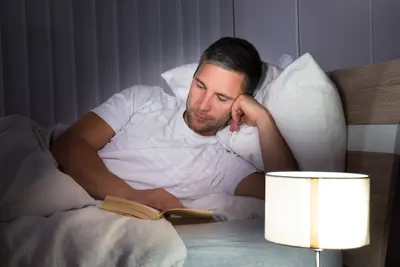It always happens on the nights when you need the most sleep. You have a huge school test, a work presentation—so why can’t you sleep through the night?
The next time you suddenly wake up in the wee hours of the morning—drift back into dreamland with these six heavenly sleep tactics that will have you snoozing again faster than counting sheep…
1. Relax by Meditating
If you’ve ever starting snoring during the last leg of a yoga class you know exactly what I mean. We take corpse pose or shavassana at the end of class, signaling to our bodies that it’s time to relax.
So do the same in bed—relax your muscles, let go of any tension or anxious thoughts by focusing on your breathing. Letting go of all tension in your muscles also triggers the brain to relax…and hopefully, fall back asleep.
2. Banish Technology from the Bedroom
If you expect to go to sleep and stay asleep until the light of morning wakes you from slumber be sure to banish all technology from the bedroom.
Yes, I’m looking at that laptop on your desk, the phone on your bedside table, and the tablet on the duvet. Electronic devices emit back light that can keep you up far past the time when you power down.
3. Resist the Urge to Snack
A nice bowl of cereal or a peanut butter and jelly sandwich might be just the comfort you seek to put you back to sleep. However, those midnight snacks actually prevent you from falling back to sleep.
Researchers from the Martha Jefferson Sleep Medicine Center, in Charlottesville, Virginia, claim that munching mid-sleep just perpetuates more sleep interruptions. How? Snacking at night conditions the brain and body to anticipate food when you should be slumbering.
4. Don’t Toss and Turn
You could fall asleep on your stomach and wake up on your back, you might think that tossing and turning until you find a comfortable position will urge you back to sleep—but you’re wrong!
If you’ve been lying wide-eyed in bed longer than 20-minutes, you’ll just create more anxiety if you don’t change course, according to research from the National Institutes of Health. Instead, get out of bed and do something relaxing (i.e., pet your cat, read a book, or meditate) to ease your mind and body.
5. Read Yourself to Sleep
If you’re a student, you already know how fast reading for English class puts you to sleep (sincere apologies to your teachers). So if you’re having difficulty falling to sleep, use words to your dreamy advantage.
Grab a book—just make sure it’s not a page-turning thriller—to simulate that dreamy feeling. Also, make sure to keep the lights low, use a reading lamp instead of turning on the bright overhead lights.
6. Keep the Lights Low
Trips to the bathroom, lights on the staircase for your spouse or roommate, and any backlit technology (i.e., laptops, tablets, smartphones) should always be powered down prior to sleepy time. Why?
Keeping every light on in your peripheral vision will tell your brain and body that it’s time to get up. After all, your brain doesn’t see the difference between natural sunlight and the light from the television.









